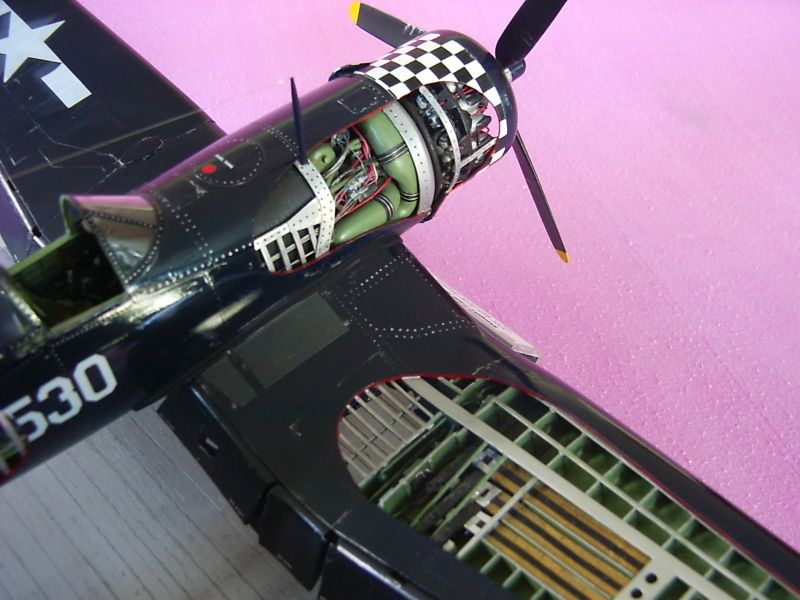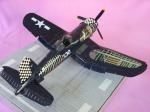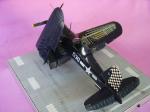The "Late War Navy Collection" Part 3: Vought Corsair F4U-1D VMF-312 "Checkerboarders"
By Chris Novak
The "Late War Navy Collection" Part 3
Vought Corsair F4U-1D VMF-312 "Checkerboarders"
1st Lt. Merritt O. Chance, 1945

One of my favorite paint schemes, no matter which plane, has always been a „checkerboard“, and although I have at least 6 of them in my collection (3 Mustangs and 3 Thunderbolts) I absolutely felt in love with the „Checkerboarders-Corsair“ TRUMPETER released in 2005. Man, what a great combination of checkerboard and overall blue scheme...a must for my „Navy-collection“! Ok, although I had one Corsair in this project I decided to add one more because I received a TRUMP kit from a LSP mate as a trade and it nearly cried out loud: build me...build me...BUILD ME!“
Another reason to add one more Corsair was the idea to make the wings work, an idea I had in my head for at least two years. OK...no guts, no glory!...after thinking seriously about how to solve the problem of the mechanics and the powerplant the project started.
Because the inner structure and the workflow of the main build continued like at the birds before in this article I´ll give you a short view of how I solved the problem of the working wingfold.
After the main spars were installed into the fuselage a small geared motor – powered by 1.5 Volt, 2 turns per Min – was installed right into the area where originally the main fuel tank is mounted.
The motor is mounted exactly onto the fuselages middle axle and a plate of 1mm styrene was mounted on the motors axle. Into this plate a pushrod of 1mm brass is inserted which goes through the wing to the point where the movable outer wings is mounted.
On the outer side the pushrod fits into a small spar of the outer wing where it can push/pull the wing up and down. One complete turn of the motor is one circle up/down. Because of the wingfold motors speed (2 turns / min) the folding sequence is very close to the original with around 15 seconds for one fold.
The fuselage underside where the wingfold-motor is mounted is made as a removable panel to give access for service if necessarily.
After the complete system was checked for functionality the build went on the normal way with detailing the fuselage, doing the motor mount (brass tubing) and so on.
In these views you can see the very complex rudder wiring of the Corsair.


Finally the small electrical mainboard for position lights where installed, this time on a sub-frame in the area where originally the main fuel tank sits.
After checking again all electrical systems, checking them twice and checking them again (no chance to repair some malfunctions after the fuselage is glued together!) the fueltank „dummy“ was installed, made from a piece of styrene and the fuselage halves were ready to be mated.
After the detail work in the forward fuselage is done no mechanics or electrical component is visible, as you can see in this pic.

A real "eyecatcher" when presented with working wingfold, prop and lights and also a real beauty because of her lovely paint scheme and a great addition to my navy collection.
Enjoy
© 2007 Chris "the ripper" Novak
This article was published on Wednesday, July 20 2011; Last modified on Saturday, May 14 2016












